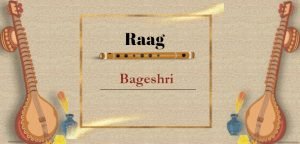In Hindustani Classical Music, Bihaag is one of the raag which is equally popular among both beginners as well as experts.It is a sweet melody raag whose name Bihag is assumed to be derived from Vihag or Vihang.
Vihang raag, the Marwa Thaat melody was popular among Atrauli-Jaipur vocalist but short-lived.
Page Contents
ToggleWhat is Bihag raag ?
Bihag is a melodious raag which belongs to Bilawal Thaat.
In Avroh, Rishabh and Dhaivat are not used as resting notes however they are used in Meend. In this Raag, Nishad Ni is a prominent note and Aalaps or Taans generally starts from this note.
Raag Bihag belongs to Bilawal thaat or Kalyan thaat, Why is there confusion ?
Pandit Vishnu Narayan Bhatkhande has assigned it to the Bilawal thaat with good reason in his compositions documented in Bhatkhande’s Kramika Pustaka Malika. It shows teevra Ma(t) to be a gupt (hidden) Swara in almost all instances.
Teevra Ma(t) occurs in the Meend from Pa to Ga or sometimes in the shadow of Pa.
The core lakshanas can be stated without regard to Ma(t). But in recent times, the use of teevra Ma(t) increased significantly. As a result, people started assuming that Bihaag raag belongs to Kalyan Thaat and it is wrong. Use of Ma(t) purposefully done to enhance the beauty of this raag.
This Raag is full of Shringar Ras. The mood of the raga is celebratory as well as romantic, making it a common raga sung especially on occasions of marriage.This is a Poorvang Pradhan Raag.
- Thaat : Bilawal
- Jaati : Audav-Sampurna
- Vadi Swara : Ga
- Samvaadi Swara : Ni
- Samay ( Time ) : Mid-night (10 pm to 12 pm)
- Vajrya ( Prohibited ) swara : Re, Dha( In Aaroh only )
- Special Swara : Teevra Ma(t)
Raag Structure : Aaroh , Avroh and Pakad
Bihag Raag Aalaap and Bandish
Aalap :
- Sa – ni Sa Ga Re Sa, ni pa ni ni Sa, Ga Ma Ga Re Sa |
- ni Sa Ga Ma Ga – Ga Ma – Pa Ma(t) Pa Ga Ma Ga, pa ni Sa Ga Re ni Sa |
- Ga Ma Pa – Ga Ma Pa Ni – Dha – Pa – Dha Ma(t) Pa Ga Ma Ga, Ma Ga Re Sa |
- Ga Ma Pa Ni SA – Ni SA – Pa Ni SA GA MA GA RE SA, Pa Ni SA Ni Dha Pa Ma(t) Pa Ga Ma Pa Ni SA, Pa SA Ni Dha Pa, Dha Pa Ma(t) Pa Ga Ma Ga, Ma Ga Re Sa ni Sa |




